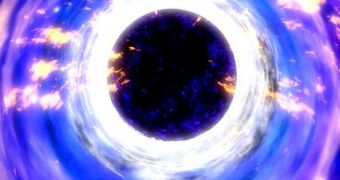The vast majority of stars end their lives through supernova explosions while others, more massive, are thought unable to produce such explosions simply because they implode and collapse under their own weight only to produce a black hole. Since these particular types of stellar death don't generate brilliant emissions in the electromagnetic spectrum, none has ever been witnessed. This is about to change with the initiation of a new study which has the sole purpose of watching for red giant stars that suddenly disappear without leaving any trace behind.
It's true that, in some cases, black hole births are accompanied by gamma-ray bursts - high concentrated emissions of radiation given of by the progenitor star as it dies - but more than half of black hole births take place without leaving behind any evidence, says Christopher Kochanek from the Ohio State University, leader of the survey.
During the five year study, more than 30 galaxies, containing approximately one million red giant stars, will be observed with the 8.4 meter Large Binocular Telescope in Arizona. The first images were taken at the beginning of the year. Each galaxy will be photographed twice per year and out of the million red giant stars monitored, at least one per year should implode into a black hole, appearing like it suddenly vanished.
"There's no guarantee that you'll find these things - because it could just be that they all do a supernova at some level. But that's no reason not to give it a try," said Kochanek.
"My own view is that it is impossible to make a black hole without some sort of electromagnetic display," says University of California astrophysicist Stan Woosley. He argues that there might be a possibility that instead of determining brilliant optical bursts of light, such events may just emit X-ray and gamma-ray radiation, thus making them invisible to astronomers searching for supernovae. "In any case, it is worth looking," he said.
The fact that the implosion has indeed created a black hole can be simply confirmed through the X-ray signature left behind by material falling towards singularity. The study may also find giant outbursts of radiation from red giant stars preparing to go 'nova', such as that produced by the Eta Carinae star - the second brightest on the night sky - during the 1840s.

 14 DAY TRIAL //
14 DAY TRIAL //